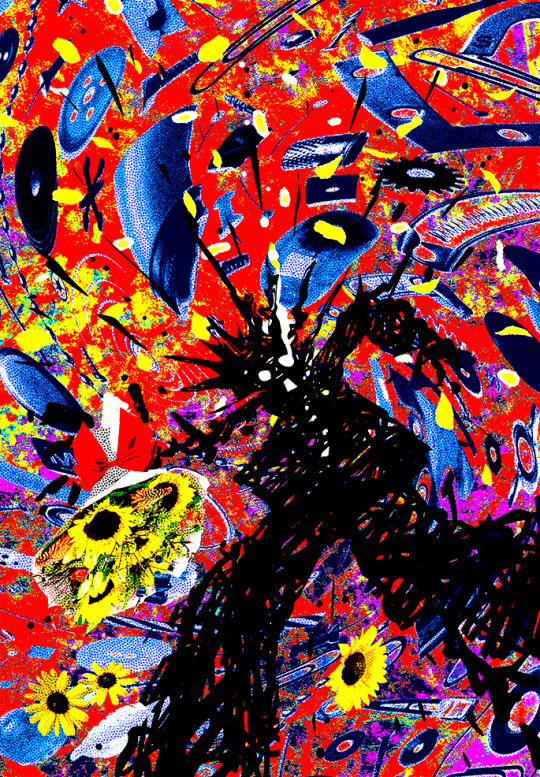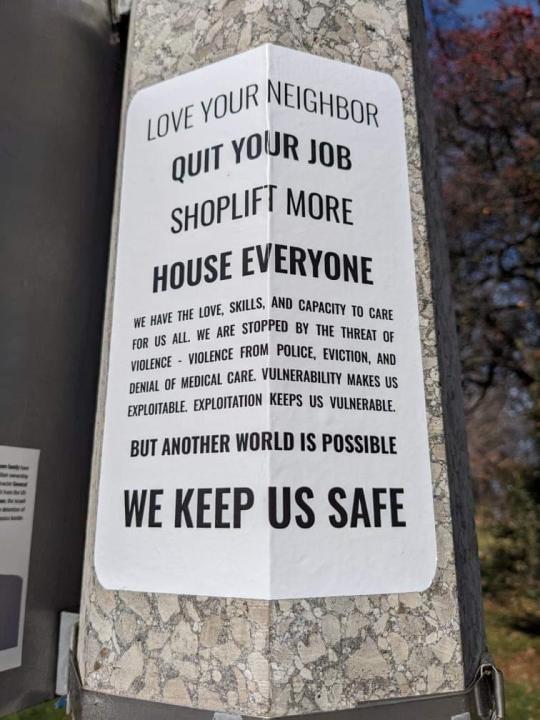Don't wanna be here? Send us removal request.
Text
Art snobs complain that using a different kind of paint "forever destroyed" the painting
Wikipedia hosts it as a 2-kilobyte SVG

27K notes
·
View notes
Text



Healing from unrequited love. Me watching him and a year later. Learning from my mistakes.
#my art#myart#original art#watercolor#gouache#mixed media#watercolor paper#self portrait#unrequited love#moving on#healing
2 notes
·
View notes
Text
support fat girls with weird curves
support fat girls with no butt
support fat girls with small boobs
dont just support the hour glass/big booty “acceptable” fat girl
466K notes
·
View notes
Text
“Barbara Waxman Fiduccia took pride in her identity as a disabled woman. Her stylish dress, whether a kimono-sleeved jacket, a leather miniskirt or leopard-print shoes, was more than an expression of personal taste. To Fiduccia, a reproductive rights activist who used a ventilator and maneuvered her wheelchair with a sort of regal command, her clothing was part of a political statement, a demand to be seen in full.
“She loved her body,” said Alice Wong, an activist and author who was a member of the National Council on Disability during the Obama administration, and who looked to Fiduccia as a role model. “She was an unapologetically sexual disabled woman — unapologetic about her politics and the way she lived her life.”

Fiduccia was among the first to campaign openly for reproductive rights for people with disabilities. In trenchant essays and policy papers, she challenged a dominant culture that viewed people with disabilities as asexual beings, with no feelings of intimacy or desire to have children.
These attitudes, she said, were translated into public policies that discouraged disabled couples from marrying and having families, and that created barriers that prevented them from enjoying sexually fulfilling lives.
In her 15 years as a sexual health educator and counselor in Los Angeles, Fiduccia regularly saw clients who experienced self-loathing and sexual loneliness — a consequence, she said, of internalized cultural notions.
She pushed to broaden the disability rights movement beyond physical access to transportation, public buildings, schools and places of employment. Disabled people, she wrote in a 1991 essay, are “concerned with being loved and finding sexual fulfillment.”
“Why hasn’t our movement politicized our sexual oppression as we do transportation and attendant services?” she wrote in the essay, which was published in The Disability Rag, a magazine devoted to disability issues. “I believe we don’t speak out because we believe we are ultimately to blame for not getting laid — that it is somehow a personal inferiority.”
Her message was empowering. “She believed that denying your sexuality was denying your personhood,” Corbett Joan O’Toole, a disability rights activist and owner of Reclamation Press, a publisher of books by authors with disabilities, said in a phone interview. “She came from the place of a woman in an electric wheelchair, speaking for people who were taught to be ashamed of who they are.”
Fiduccia pushed for increased access to reproductive services, including mammograms and pelvic exams. She and others successfully lobbied to expand the national Hate Crime Statistics Act to include violence against people with disabilities. She also served on the California attorney general’s Civil Rights Commission on Hate Crimes.
With her future husband, Daniel Fiduccia, a legal affairs consultant she met at a 1992 training session for disability advocates, she fought to raise the income limit for federal health benefits, which stood in the way of marriage for disabled couples. Daniel Fiduccia was a survivor of childhood cancer, and his mobility was limited from radiation treatments that had weakened his bones.
Under federal health limits, Barbara Fiduccia’s salary as a single woman was low enough for Medicare and Medicaid to cover the cost of her personal attendants and ventilator. But the couple’s combined income was over the limit, forcing them to choose between marriage and the health benefits that helped keep Barbara Fiduccia alive. Her dilemma, she told The San Jose Mercury News in 1995, felt “like a dirty joke.”
“I was told in so many ways as a girl that I’d always be alone,” she told the newspaper. Instead, she said, she found “tremendous love and passion” with a man who wanted to spend his life with her. “I got over the stigma,” she said, “and now I can’t get married.”
Her ventilator strapped to the back of her wheelchair, Barbara Fiduccia made the rounds on Capitol Hill, advocating alongside other disability activists, while Daniel Fiduccia helped map out a legal strategy. Although Congress did not eliminate the so-called marriage penalty, the rules were changed in the mid-1990s to allow states to grant waivers to individual couples.
“They wanted to be married, and this was their one shot,” Marsha Saxton, director of research and training at the World Institute on Disability in Oakland, Calif., and a friend of Barbara Fiduccia, said in a phone interview. “But they also wanted to change policy.”
The couple married in July 1996 in a small Roman Catholic service near their home in Cupertino, Calif., said Rick Santina, a family friend who attended. They were fond of children, though they had none of their own. Santina said his children came to know Barbara Fiduccia as “Aunt Beep” because she let them blast the horn on her wheelchair as she gave them rides on her lap.
Barbara Faye Waxman was born in Los Angeles on April 1, 1955, the younger of two children of Sol Waxman, owner of a commercial photography lab, and Toby (Lowsky) Waxman. She and her brother, Michael, had spinal muscular atrophy, an inherited disorder that causes progressive muscle weakness. Her parents were told she would not live past 30.
Because she could walk as a child, albeit with difficulty, her parents wrestled with whether to enroll her in special education classes, where she was more likely to make friends, or in regular public school classes, where she would receive a better education. They chose the latter, an environment Fiduccia described years later as “psychologically damaging.”
During recess in grade school, a teacher routinely admonished her to run, though young Barbara was incapable of doing so. In high school, she tripped almost daily on an uneven carpet as her math teacher walked past her, staring. “In those 12 years, though they never spoke of it, I believe it was my disability they saw, while forgetting it was a child who possessed it,” she said.
After receiving her bachelor’s degree in psychology from California State University, Northridge, in 1978, Fiduccia went to work at Planned Parenthood in Los Angeles as a health educator and disability project coordinator. Clients told her that gynecologists, like her former teachers, often focused on their disabilities instead of on their reproductive health needs.
“I know of many times when a woman has been sent back to her orthopedist for a Pap smear,” she said in her 1985 testimony before a congressional committee exploring changes to Title IX, which bars gender discrimination at institutions receiving federal funding.
But Fiduccia eventually left Planned Parenthood, pained by what she called a “strong eugenics mentality that established disdain, discomfort and ignorance toward disabled babies.” She cringed whenever her co-workers discussed prenatal testing and the need to abort a disabled fetus. “There was a feeling that there were bad babies,” she told The New York Times in 1991.
Fiduccia then worked at the Los Angeles Regional Family Planning Council, an umbrella organization for more than 100 clinics, where she continued her focus on reproductive health for women with disabilities. After that, she served as senior associate at the Center for Women Policy Studies, a feminist policy research organization.
Her husband, an advocate for childhood cancer survivors, died after a recurrence of cancer in 2001. Fiduccia herself died 18 days later, on April 24, when her ventilator equipment failed. She was 46.
A year after their marriage, the Fiduccias renewed their vows in a Jewish service in Los Angeles. Surrounded by hundreds of guests, the couple made their way, hand in hand, across a terrace toward a huppah, he in his scooter and she in her wheelchair, which she rode, her friend Marsha Saxton said, “like a queen on a steed.” Under the wedding canopy, in keeping with Jewish tradition, she circled the groom seven times.
Fiduccia’s dress, Saxton said, was “full of life,” a statement of triumph in bronze and teal. After the dinner, the Fiduccias took to the dance floor, which was covered in bubble wrap that joyously popped as their wheels rolled over it. Soon guests in wheelchairs joined them on the floor; others looked on, waiving light sticks. The celebration ended with fireworks, an explosion of color against the night sky.”
- Denise Gellene, “Overlooked No More: Barbara Waxman Fiduccia, Reproductive Rights Advocate.”
2K notes
·
View notes
Text
A small PSA to all those new to dealing with the porn bots that Tumblr now has a fresh wave of – I understand that when you go to report them, you want to report them as "[containing] sexually explicit material", but don't do that. Report them as spam instead.
These are spam bots flooding tags and the website in general with spam links. They often do not have anything sexually explicit on their blog (although they often have implicit material). Plus, these two reports get very different results. Reporting explicit material gets the bot slapped behind an 18+ wall, so minors can't check if they're a bot or not. Reporting spam gets the bot taken down.
Remember, folks: when dealing with a bot, report spam, not smut!
73K notes
·
View notes
Photo

You can trust the guidance you’ve been receiving.
603 notes
·
View notes
Photo







Hello, I currently have cool art available in my shop–have a look!
198 notes
·
View notes
Text

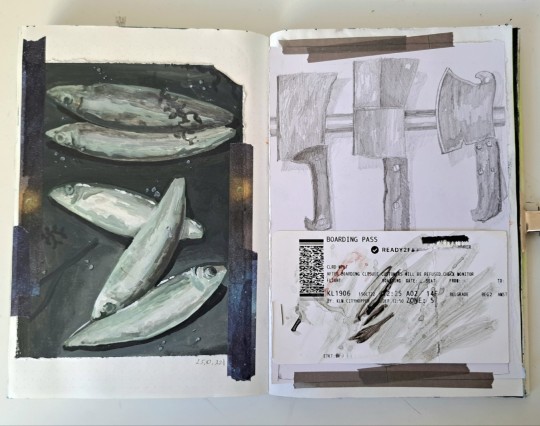

The Elegant Universe by Brian Greene
A Blue Fire by James Hillman
300 notes
·
View notes
Text

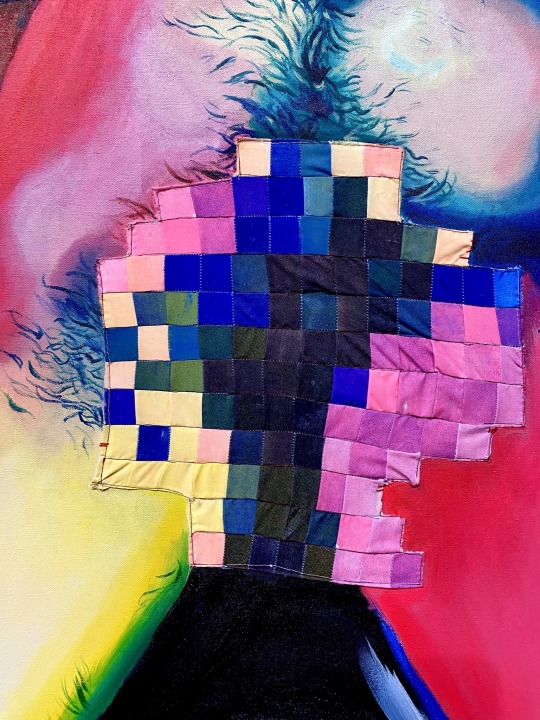
“In compliance with community guidelines” 2022, acrylic painting with screen printed quilt and embroidery, 50x80”
Click for full image!!
My thesis-painting this semester! I worked with two subjects of this pieces; 1) the censorship of queer and trans identities in our age of social media in part due to the anti-lgbt hate and laws passed this year and 2) the value of traditional art and artisanal mediums such as textiles ,in an increasingly digital art market, by appropriating digital iconography using entirely traditional mediums and techniques.
Ig: Alexgadart
8K notes
·
View notes
Photo
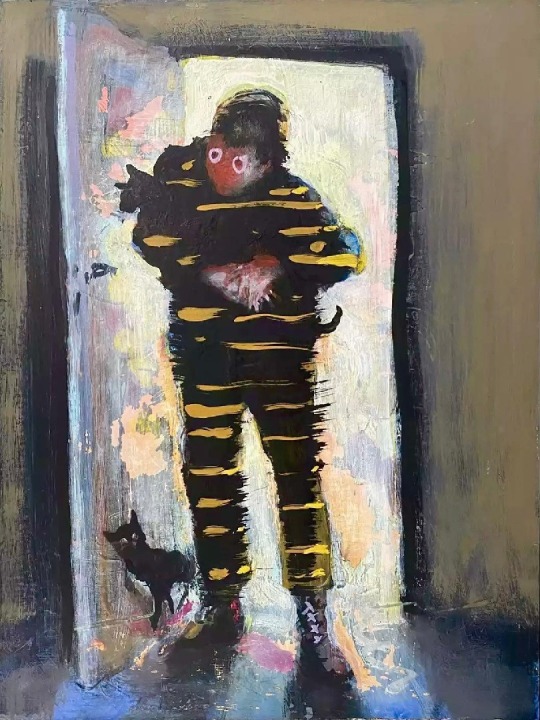
Nicola Bealing
Boy with striped suit and cats. 2021
180 notes
·
View notes
